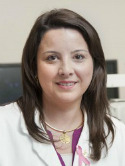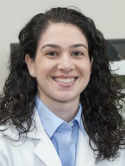Automatic quantification of HER2 gene amplification in invasive breast cancer from chromogenic in situ hybridization whole slide images Journal Article
| Authors: | Hossain, M. S.; Hanna, M. G.; Uraoka, N.; Nakamura, T.; Edelweiss, M.; Brogi, E.; Hameed, M. R.; Yamaguchi, M.; Ross, D. S.; Yagi, Y. |
| Article Title: | Automatic quantification of HER2 gene amplification in invasive breast cancer from chromogenic in situ hybridization whole slide images |
| Abstract: | Human epidermal growth factor receptor 2 (HER2), a transmembrane tyrosine kinase receptor encoded by the ERBB2 gene on chromosome 17q12, is a predictive and prognostic biomarker in invasive breast cancer (BC). Approximately 20% of BC are HER2-positive as a result of ERBB2 gene amplification and overexpression of the HER2 protein. Quantification of HER2 is performed routinely on all invasive BCs, to assist in clinical decision making for prognosis and treatment for HER2-positive BC patients by manually counting gene signals. We propose an automated system to quantify the HER2 gene status from chromogenic in situ hybridization (CISH) whole slide images (WSI) in invasive BC. The proposed method selects untruncated and nonoverlapped singular nuclei from the cancer regions using color unmixing and machine learning techniques. Then, HER2 and chromosome enumeration probe 17 (CEP17) signals are detected based on the RGB intensity and counted per nucleus. Finally, the HER2-to-CEP17 signal ratio is calculated to determine the HER2 amplification status following the ASCO/CAP 2018 guidelines. The proposed method reduced the labor and time for the quantification. In the experiment, the correlation coefficient between the proposed automatic CISH quantification method and pathologist manual enumeration was 0.98. The p-values larger than 0.05 from the one-sided paired t-test ensured that the proposed method yields statistically indifferent results to the reference method. The method was established on WSI scanned by two different scanners. Through the experiments, the capability of the proposed system has been demonstrated. © 2019 Society of Photo-Optical Instrumentation Engineers (SPIE). |
| Keywords: | controlled study; diagnostic accuracy; breast cancer; genes; gene amplification; epidermal growth factor receptor 2; cell differentiation; automation; false negative result; in situ hybridization; medical imaging; diagnosis; amplification; fluorescence microscopy; amino acids; patient treatment; decision making; false positive result; signal detection; diseases; chromosome 17; image registration; noise reduction; digital pathology; whole slide imaging; tumor invasion; machine learning; learning systems; chromogenic in situ hybridization; her2-positive breast cancer; human; article; her2 gene amplification; feature selection; digital pathologies; whole slide imaging (wsi); automatic cish quantification; watershed algorithm |
| Journal Title: | Journal of Medical Imaging |
| Volume: | 6 |
| Issue: | 4 |
| ISSN: | 2329-4302 |
| Publisher: | SPIE |
| Date Published: | 2019-10-01 |
| Start Page: | 047501 |
| Language: | English |
| DOI: | 10.1117/1.Jmi.6.4.047501 |
| PROVIDER: | scopus |
| PMCID: | PMC6868351 |
| PUBMED: | 31763355 |
| DOI/URL: | |
| Notes: | Source: Scopus |
Altmetric
Citation Impact
BMJ Impact Analytics
Related MSK Work











